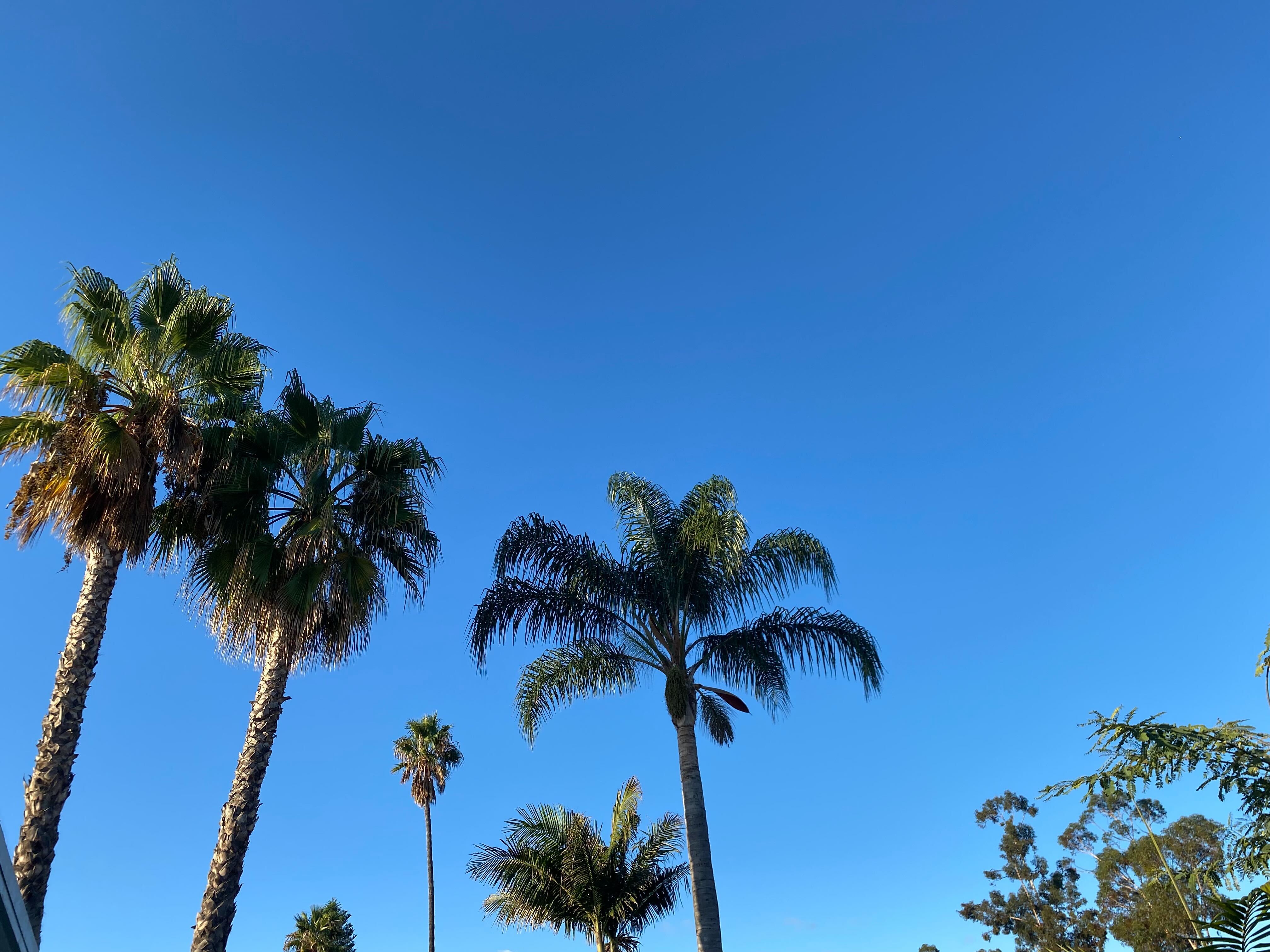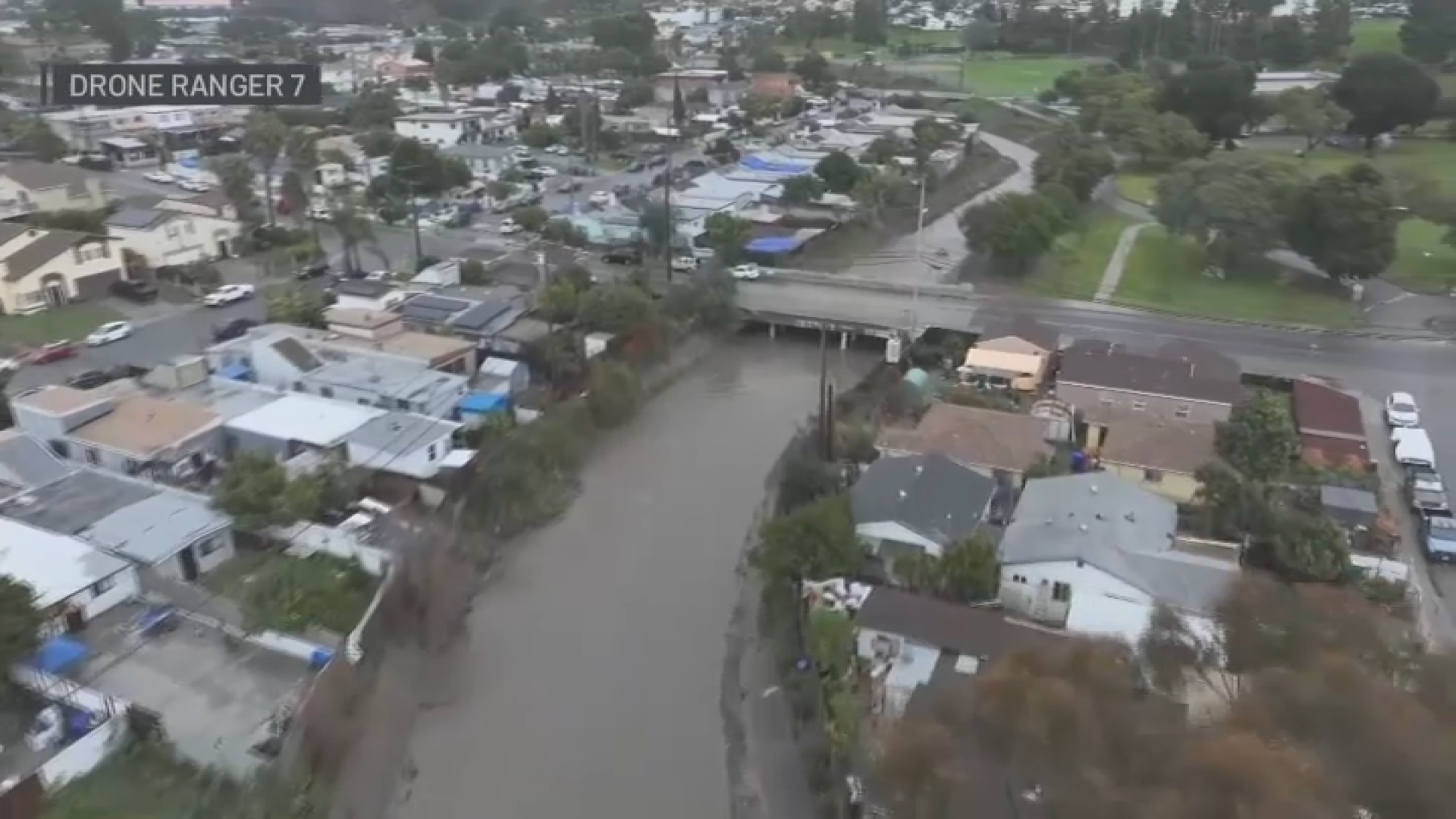”I can hear you now, Brooke.”
That was the first sentence NBC 7’s Brooke Martell heard from NASA astronaut, Commander Matthew Dominick, during their virtual interview.
Usually, platforms like Zoom or Microsoft Teams are utilized when there are schedule constraints, or there’s a geographic divide, which, in this case, was the challenge because Commander Dominick was about 250 miles away in outer space as part of the SpaceX Crew-8 mission.
Dominick, an active duty U.S. Navy astronaut, is currently a flight engineer on a mission aboard the International Space Station (ISS) with crew members Pilot Michael Barratt, Mission Specialist Jeanette Epps, and Roscosmos cosmonaut Mission Specialist Alexander Grebenkin. The four docked at the ISS in March 2024 to join Expedition 70 and 71.
Get top local stories in San Diego delivered to you every morning. Sign up for NBC San Diego's News Headlines newsletter.
“The best part about it is there’s no such thing as an average day. It’s all over the board,” Dominick said.
According to NASA, the ISS is a large spacecraft in orbit around Earth at an average altitude of approximately 250 miles and travels at 17,500 mph, which means it orbits Earth every 90 minutes.
“I have these very clear memories of the launch to get up here that just at first when the time hit zero and you’re lifted off, it’s just this really cool but bizarre lifting up of your body like you’re just being lifted up,” Dominick said of the trip to the ISS back in March.
Local
“I’ve done a lot of catapult shots flying aircraft in the Navy, I’ve flown a lot of different airplanes, but there was nothing quite like that feeling,” Dominick continued. “It was very smooth, it was a lift off and that sensation of the first stage cuts off and you kind of get this weird floating feeling because you are in free fall feel for a brief moment before the second engine lights off and the second stage throws you back. It’s something I’ll never forget and then also unstrapping and floating out of your seat and just looking out the window for the first time and seeing the curvature of the earth. Not enough words do it justice.”
What’s it like working aboard the ISS in microgravity?
A graduate of the Naval Postgraduate School in Monterey and the U.S. Naval Test Pilot School, Dominick knows what it's like to take flight. He has more than 1,600 hours of flight time in 28 aircraft, 400 carrier-arrested landings, and 61 combat missions. Those experiences led him to this moment.
“We have an incredible group of teams, incredible group of folks around the planet who put our day together for us. When we wake up and call it following the red line, but there’s a line that goes across the computer screen that shows us what to do, and what to work on,” Dominick said.
While floating in microgravity, Dominick joked that his commute to work was short, pointing to where he sleeps which was just behind the camera that was streaming our interview, and then pointing behind him to where he works.
“Floating to work doesn’t make it feel like it’s work,” Dominick said. “When we have downtime, I’m taking pictures a lot. I was looking at the start of this PAO event going up cause I have a camera running over in the Russian segment in a window I have been experimenting with lately deep sky images of the Milky Way – that timelapse is going to be done here in a minute so I had to ask one of my crew mates to turn it off for me so it’s supposed to be ending right now.”
Sometimes, astronauts aboard the ISS do what’s called a sleep shift. Dominick says that could require them to be up during early or late parts of the day if they have a new spacecraft coming up. Because they don’t wake up with the sun like they would on Earth, even the lights in the ISS are designed to mimic outside lights, so they can turn them up bright or dim them to help shift their circadian rhythm. He says even up in space, no day is ever the same.
“We might be working on an experiment one day, doing maintenance another day. Today, they were fixing a pump that manages our water system,” Dominik said.
And if you’re wondering what time zone an astronaut follows, it’s Greenwich Mean Time, GMT. Dominick says it’s been followed for the last 20 years and it’s convenient for the other major control centers around the world.
Dominick isn’t just a NASA astronaut, he’s a husband and dad, too.
”I have two daughters and I’ll call my wife and she’ll put them on video chat all the time and my daughters will invariably be with one of their friends and my younger daughter loves it, she’s always like, 'Hey! Daddy, you gotta, show them the water thing, you gotta show them the water thing,' it’s like you have to prove that their dad’s in space.”
That water thing is Dominick showing how water behaves in microgravity, which you just have to see for yourself.

”I have a water bag nearby. Most of the time when you drink from a water bag you drink from the straw like any sane human up here, but a lot of the time, hey, why not? You gotta make a bubble of water because it’s just fun so we absolutely do that all the time. It’s one of my more favorite things to do. Learning how to do this took a little bit of time,” Dominick said.
Speaking of his family, regardless of the distance, keeping up communication with them is easy and fast, says Dominick.
“We are a satellite orbiting Earth and we send our communications to another satellite which beams back to Earth and through some fiberoptic wires and back to our family. It’s pretty convenient, we have really good internet connection so if I need to be on some time when I’m working out on video chat lifting weights talking with my wife and kids and it’s, you can stay well connected pretty easily.”
Dominick’s journey began in March for a six-month mission. On the heels of completion aboard the ISS, he has plans to continue working towards advancing space technology once he lands back on Earth.
“My hope is to contribute to the development of new spacecraft having had this operational experience and going back and forth between development and operations just so you can give you give the operators perspective in the flight test.”
For those who aspire to launch their career into space, Dominick had this to say:
”I think the best thing you can do is go pick something you love 'cause then you’ll be good at it and it won’t feel work at all.”
Dominick’s legacy in San Diego
While Dominick continues his work in space, he has strong connections to San Diego. He earned his Bachelor of Science in Electrical Engineering from the University of San Diego with minors in Physics and Mathematics.
”I think my desire to explore the world and the cosmos around me started well before the University of San Diego, but going there certainly helped keep that dream alive.”
He said he had a wonderful experience at the university not only studying engineering, but liberal arts too, which he says gave him a wide breadth of understanding beyond his major.
”One of the things I like to talk about folks is I run out of fingers when I talk about the number of rocket ships the world is working on right now launching into space,” Dominick said. “We’re launching rockets, we’re launching human-rated spacecraft everywhere and it’s really incredible and that means we’re acquisition, a fancy term, and we’re developing new spacecraft and that means testing them and understanding them.
Today, Dominick’s journey to space inspires minds at his alma mater.
Students like Jacob Ramirez, a mechanical engineering student at USD and a Staff Sergeant in the U.S. Air Force Reserve.
”As an engineer, I really want to go out and build something and the space industry has always really fascinated me since I was a little kid,” Ramirez said.
Now, he’s taking that extraterrestrial fascination to other students on campus.
“We just started the Terero Space Program. Terero Space Program is a club on campus that is trying to be an entry point in the space industry to get people in college, students really interested, and really give them some hands-on knowledge and some exposure to that. And the first project we have going is going to be a CubeSat starting this fall,” Ramirez said.
Ramirez described the CubeSat as a 4x4 inch box that will be built by him and students at the university. The goal would be to launch it into space.
“Space has always been that cool thing, and for a lot of people, though, it's always been that something like, 'Oh, it's like out of this world, you know?' It's hard to kind of see the steps to get there, and so hopefully this program can be like, 'Oh, if I, you know, go up on this program, there are steps I can take to help put me in that place where I want to be,' and so that's what's really exciting about the club,” Ramirez said.
He can’t help but be inspired by the path that Dominick took to get to space and hopes his club will create similar opportunities for students.
“We can point him like, ‘Hey, do you want to be like him?’ And join it, so he's opened a lot of doors and made things a lot easier.”
Even Dominick’s former professor, Dr. Kathleen Kramer, continues to be inspired by Dominick’s ambition and determination. She shared this message to him:
“Godspeed to him on his mission. I'm just proud of what he's accomplished. And literally the universe is the limit.”



